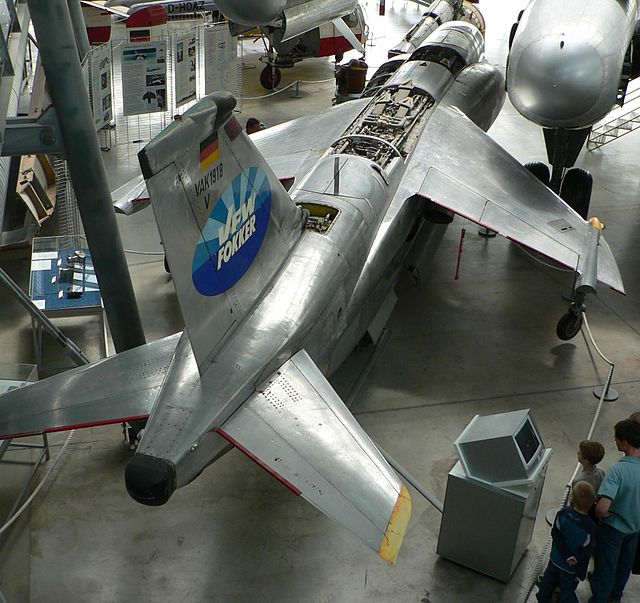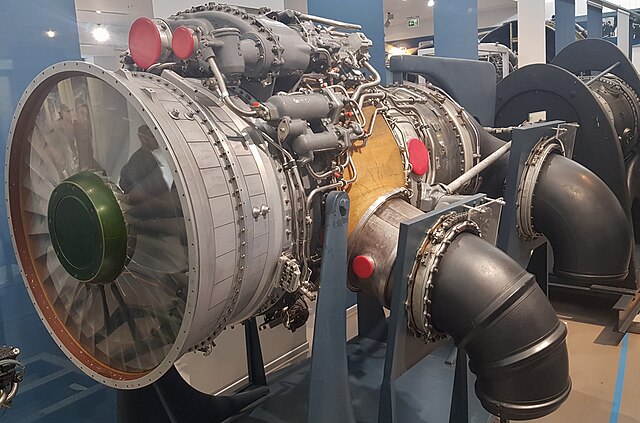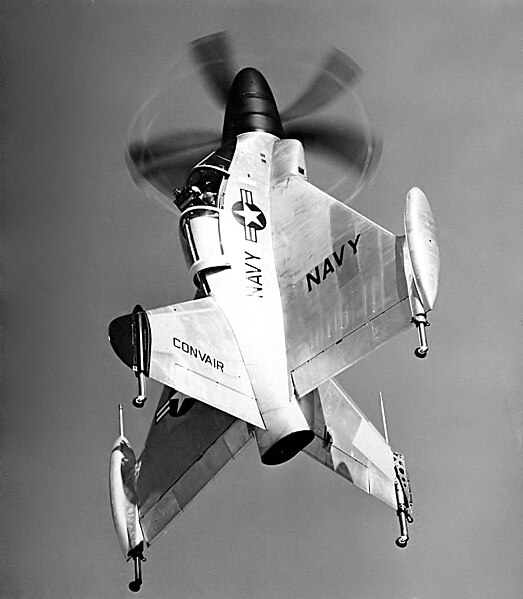The VFW VAK 191B was an experimental German vertical take-off and landing (VTOL) strike fighter of the early 1970s. VAK was the abbreviation for Vertikalstartendes Aufklärungs- und Kampfflugzeug. Designed and built by the Vereinigte Flugtechnische Werke (VFW), it was developed with the purpose of eventually serving as a replacement for the Italian Fiat G.91 then in service with the German Air Force. Operationally, it was intended to have been armed with nuclear weapons as a deterrent against aggression from the Soviet Union and, in the event of a major war breaking out, to survive the first wave of attacks by deploying to dispersed locations, rather than conventional airfields, and to retaliate against targets behind enemy lines.
VFW VAK 191B
Rotating nozzle detail
VAK 191B from above
Rolls-Royce/MAN Turbo RB193-12
A vertical take-off and landing (VTOL) aircraft is one that can take off and land vertically without relying on a runway. This classification can include a variety of types of aircraft including helicopters as well as thrust-vectoring fixed-wing aircraft and other hybrid aircraft with powered rotors such as cyclogyros/cyclocopters and gyrodynes.
A F-35B demonstrating a vertical landing
Convair XFY-1 Pogo in flight
Bell XV-15
Fairey Jet Gyrodyne








